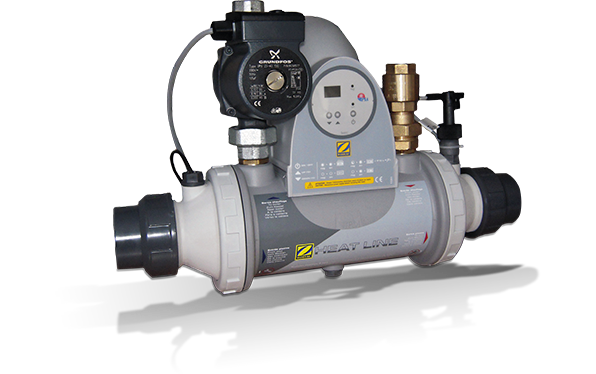
It is possible to consider installing the heat exchanger when all the conditions for the proper functioning of this equipment are met: the efficient boiler, the technical room and the swimming pool are in an area close to each other. Because the further away they are, the longer the pipes, the greater the heat loss between the hot water production point and the pool.
How does the heat exchanger work?
There are two very distinct pipe circuits, one for the heating of the house the other for the swimming pool. The waters of one and the other do not mix in any way! It is the hot water from the domestic installation that provides the calories needed to heat the water in the swimming pool circuit via the tubes or plates of the exchanger. For the pool water temperature to rise, the pool filtration must be working.
What are the main technical characteristics of the swimming pool heat exchanger?

The tube exchanger is rather recommended for boilers. It is less expensive and less bulky than a plate heat exchanger which is more intended for it when a heat pump is used to heat the house. The titanium exchanger is more resistant, it is essential if the treatment of the pool is salt electrolysis. For all other treatments, the stainless steel heat exchanger is sufficient, but less resistant to chemicals than the titanium one.
The circulator is a feature that is not necessarily mandatory, it depends on the existing facility. It is better to approach a specialist for this option. It heats the home and the pool simultaneously and maintains a constant flow rate. The flow rate of the circulator must be compatible with that of the boiler. If swimming is planned all year round, the circulator is essential! A flow switch can be installed to check the pressure.
The thermostat or regulator allows you to choose the temperature of the bathing water. It cuts off hot water production to the swimming pool when the set point is reached. The circulator and the thermostat are features that are not necessarily essential. They increase the price of the device, which becomes larger but more efficient.
How to install a swimming pool exchanger?
Where to place the swimming pool heat exchanger?
The heat exchanger is installed in a ventilated, dry room, as close as possible to the primary heating source. If the exchanger is far from the pool, it is necessary to limit heat loss and thermally insulate the pipes of the primary circuit (house network) and secondary (pool network).
It is positioned after the pool filter but before the automatic treatment, and lower than the latter, to avoid the return of the treatment products in the device.
To ensure that the exchanger is always supplied with water, it is advisable to place it at a low point in the primary and secondary circuit. A by-pass assembly is ideal, because it gives the possibility of managing the flow of water and isolating the device in the event of intervention or during wintering.
Installation tips for a heat exchanger
First of all, it is necessary to ensure the compatibility of the domestic installation (boiler, heat pump) with the exchanger, flow rate, power, etc. The device must be sized according to the characteristics of the swimming pool, volume of water, desired water temperature…
The exchanger must be protected by a 30 mA differential circuit breaker at the head of the line.
It is installed horizontally on a rigid pipe in bypass or By-pass.
When the heating source is geothermal, a buffer tank is strongly recommended but it is mandatory if the domestic heating is solar.
The different ways of installing the exchanger depend on the main heater. You must follow the manufacturer's installation instructions or call in a professional.
To find out more, we invite you to read our articles dedicated to this method of heating which answer the following questions: why choose an exchanger to heat the water in the swimming pool and how to maintain and winterize a swimming pool exchanger.